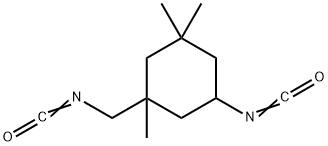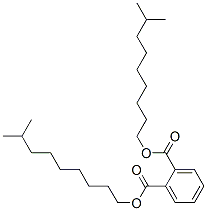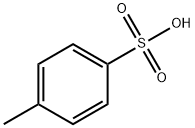Tolylene-2,4-diisocyanate , >98.0%(GC) , 584-84-9
Synonym(s):
TDI;Tolylene 2,4-diisocyanate;Toluene 2,4-diisocyanate;2,4-Diisocyanatotoluene;4-Methyl-m-phenylene diisocyanate
CAS NO.:584-84-9
Empirical Formula: C9H6N2O2
Molecular Weight: 174.16
MDL number: MFCD00002011
EINECS: 209-544-5
PRODUCT Properties
| Melting point: | 20-22 °C(lit.) |
| Boiling point: | 124-126 °C18 mm Hg(lit.) |
| Density | 1.225 g/mL at 25 °C |
| vapor density | 6 (vs air) |
| vapor pressure | 0.03 mm Hg ( 25 °C) |
| refractive index | n |
| Flash point: | 250 °F |
| storage temp. | 2-8°C |
| solubility | Miscible with ether, acetone, benzene, carbontetrachloride and chlorobenzene. |
| form | Liquid |
| color | Colorless |
| Specific Gravity | 1.225 |
| Odor | Sharp, pungent odor detectable at 0.02 to 0.4 ppm |
| explosive limit | 9.5% |
| Water Solubility | reacts |
| Sensitive | Moisture Sensitive |
| Merck | 14,9530 |
| BRN | 744602 |
| Exposure limits | TLV-TWA 0.0355 mg/m3 (0.005 ppm)
(ACGIH and NIOSH); STEL or ceiling/10
min 0.142 mg/m3 (0.02 ppm) (ACGIH,
NIOSH, and OSHA); IDLH 71 mg/m3
(10 ppm) (NIOSH). |
| Stability: | Stable, but decomposes in the presence of moisture. Also heat and light sensitive. Readily polymerizes in contact with base. Reacts with compounds containing active hydrogen. Incompatible with strong oxidizing agents. Corrodes some copper and aluminium alloys. |
| InChIKey | DVKJHBMWWAPEIU-UHFFFAOYSA-N |
| LogP | 3.43 at 22℃ |
| CAS DataBase Reference | 584-84-9(CAS DataBase Reference) |
| NIST Chemistry Reference | Benzene, 2,4-diisocyanato-1-methyl-(584-84-9) |
| EPA Substance Registry System | Toluene-2,4-diisocyanate (584-84-9) |
Description and Uses
Toluene diisocyanate (TDI), (OCN)2C6H3CH3, is a water-white to pale-yellow liquid with a sharp, pungent odor. It reacts with water to release carbon dioxide. The specific gravity is 1.22, which is heavier than water. TDI is toxic by inhalation and ingestion, and is a strong irritant to skin and other tissue, particularly the eyes. The TLV is 0.005 ppm in air, and the IDLH is 10 ppm. The target organs are the respiratory system and the skin. The four-digit UN identification number is 2078. The NFPA 704 designation is health 3, flammability 1, and reactivity 3. The white section at the bottom of the diamond has a W with a slash through it, indicating water reactivity. The primary uses of TDI are in the manufacture of polyurethane foams, elastomers, and coatings.
Toluene-2,4-diisocyanate is one of the mostextensively used isocyanates. It is usedin the production of rigid and flexibleurethane foams, elastomers, and coatings. Inaddition to its use as a pure compound, itis commercially available as a mixture of2,4- and 2,6-isomers (80 : 20% and 65 : 35%ratios, respectively).
Safety
| Symbol(GHS) |   GHS06,GHS08 |
| Signal word | Danger |
| Hazard statements | H315-H317-H319-H330-H334-H335-H351-H412 |
| Precautionary statements | P202-P273-P280-P302+P352-P304+P340+P310-P305+P351+P338 |
| Hazard Codes | T+ |
| Risk Statements | 26-36/37/38-40-42/43-52/53 |
| Safety Statements | 23-36/37-45-61 |
| RIDADR | UN 2078 6.1/PG 2 |
| WGK Germany | 2 |
| RTECS | CZ6300000 |
| F | 10-21 |
| Autoignition Temperature | >619 °C |
| TSCA | TSCA listed |
| HazardClass | 6.1 |
| PackingGroup | II |
| HS Code | 29291010 |
| Hazardous Substances Data | 584-84-9(Hazardous Substances Data) |
| Toxicity | Acute oral LD50 for rats 5,800 mg/kg, wild birds 100 mg/kg (quoted, RTECS, 1985). |
| IDLA | 2.5 ppm |
| Limited Quantities | 100ml (liquid) or 0.5 Kg (solid) |
| Excepted Quantities | Max Inner Pack (1g or 1ml) and Max Outer Pack (500g or 500ml) |





